Tom's Hardware Verdict
The HP FX900 Pro is a solid drive, especially at 2TB, that is unfortunately positioned within a competitive market. It’s an interesting alternative for someone that wants a drive of this caliber, but there’s not much to set it apart.
Pros
- +
Good all-around performance
- +
Reasonable burst performance with a large SLC cache
- +
Competitive warranty, cooling, and efficiency
Cons
- -
Does not particularly stand out and could use more optimization
- -
Finds itself in a very crowded market segment
Why you can trust Tom's Hardware
The HP FX900 Pro is the big brother of the HP FX900 we recently reviewed but comes sporting a more powerful controller with DRAM. This drive is aimed at competing with the big boys — it’s a high-end PCIe 4.0 drive with top-tier performance. This places it directly against some of the best SSDs on the market, like the WD Black SN850, Samsung 980 PRO, Crucial P5 Plus, manifold Phison E18 drives like the Rocket 4 Plus, and even the stellar SK hynix Platinum P41.
However, the FX900 Pro's warranty and cooling are nothing to write home about, and while pricing is competitive, it isn't outstanding. It fills the same slot as the Adata S70 Blade - or the similar Premium - making it a somewhat cheaper, high-end, 2TB option for the PlayStation 5 or PC. It might be less attractive at lower capacities, though.
It can be challenging to pick a drive in the increasingly crowded SSD marketplace, especially at the high-end. Many people would be fine with supposedly lower-end SSDs, too, the HP FX900 being a prime example. The FX900 Pro has to be compelling against its direct competition but also has to offer something over its more affordable sibling. While we specifically want to see how it lines up against similar drives, it’s worth it to consider whether you need that extra bandwidth. As with the FX900, the drive is actually binned and made by BiWin. Let’s see if HP can make another worthwhile drive — we think it can.
Specifications
| Product | 512GB | 1TB | 2TB | 4TB |
| Pricing | $84.99 | $129.99 | $249.99 | N/A |
| 512GB / 512GB | 512GB / 512GB | 1024GB / 1024GB | 2048GB / 2048GB | 4096GB / 4096GB |
| Form Factor | M.2 2280 | M.2 2280 | M.2 2280 | M.2 2280 |
| Interface / Protocol | PCIe 4.0 x4 | PCIe 4.0 x4 | PCIe 4.0 x4 | PCIe 4.0 x4 |
| Controller | InnoGrit IG5236 | InnoGrit IG5236 | InnoGrit IG5236 | InnoGrit IG5236 |
| DRAM | DDR4 | DDR4 | DDR4 | DDR4 |
| Flash Memory | 176-Layer Micron TLC (B47R) | 176-Layer Micron TLC (B47R) | 176-Layer Micron TLC (B47R) | 176-Layer Micron TLC (B47R) |
| Sequential Read | 7,000 MBps | 7,400 MBps | 7,400 MBps | 7,400 MBps |
| Sequential Write | 3,800 MBps | 6,400 MBps | 6,700 MBps | 6,300 MBps |
| Random Read | 540,000 IOPS | 1,014,000 IOPS | 1,344,000 IOPS | 1,350,000 IOPS |
| Random Write | 938,000 IOPS | 1,079,000 IOPS | 1,122,000 IOPS | 1,150,000 IOPS |
| Security | N/A | N/A | N/A | N/A |
| Endurance (TBW) | 300 TBW | 600 TBW | 1200 TBW | 2400 TBW |
| Part Number | 4A3T9AA | 4A3U0AA | 4A3U1AA | 4A3U2AA |
| Warranty | 5-Year | 5-Year | 5-Year | 5-Year |
The FX900 Pro comes in four capacities of 512GB, 1TB, 2TB, and 4TB, although the final capacity is, as of yet, difficult to find. The 1TB and 2TB capacities have the best dollar-per-GB pricing, with the 2TB SKU coming in a bit cheaper than the SK hynix Platinum P41. As of the time of the review, the FX900 Pro matches the Amazon price of the 2TB S70 Blade, which has essentially the same hardware. Nevertheless, the FX900 Pro is a reasonable alternative.
As with the FX900, HP’s IOPS ratings seem a bit on the high side. The FX900 Pro's InnoGrit IG5236 controller is officially rated for up to 1M/800,000 read/write IOPS, which this drive exceeds even at 1TB. Peak performance is at 2TB, which makes sense as you will have the optimal amount of dies for interleaving. This model is pegged at 7.4/6.7 GBps of sequential read/write throughput, so there’s no question this is a high-end PCIe 4.0 drive.
The warranty is a standard five-year affair with an endurance rating of 600 TB of write endurance per 1TB of SSD capacity. This is within the typical range for higher-end drives. Some might lament the endurance decline from the heights seen with Phison E12 and E16 drives, but it’s really not a big deal. It’s challenging to do that many writes within the warranty period.
A Closer Look
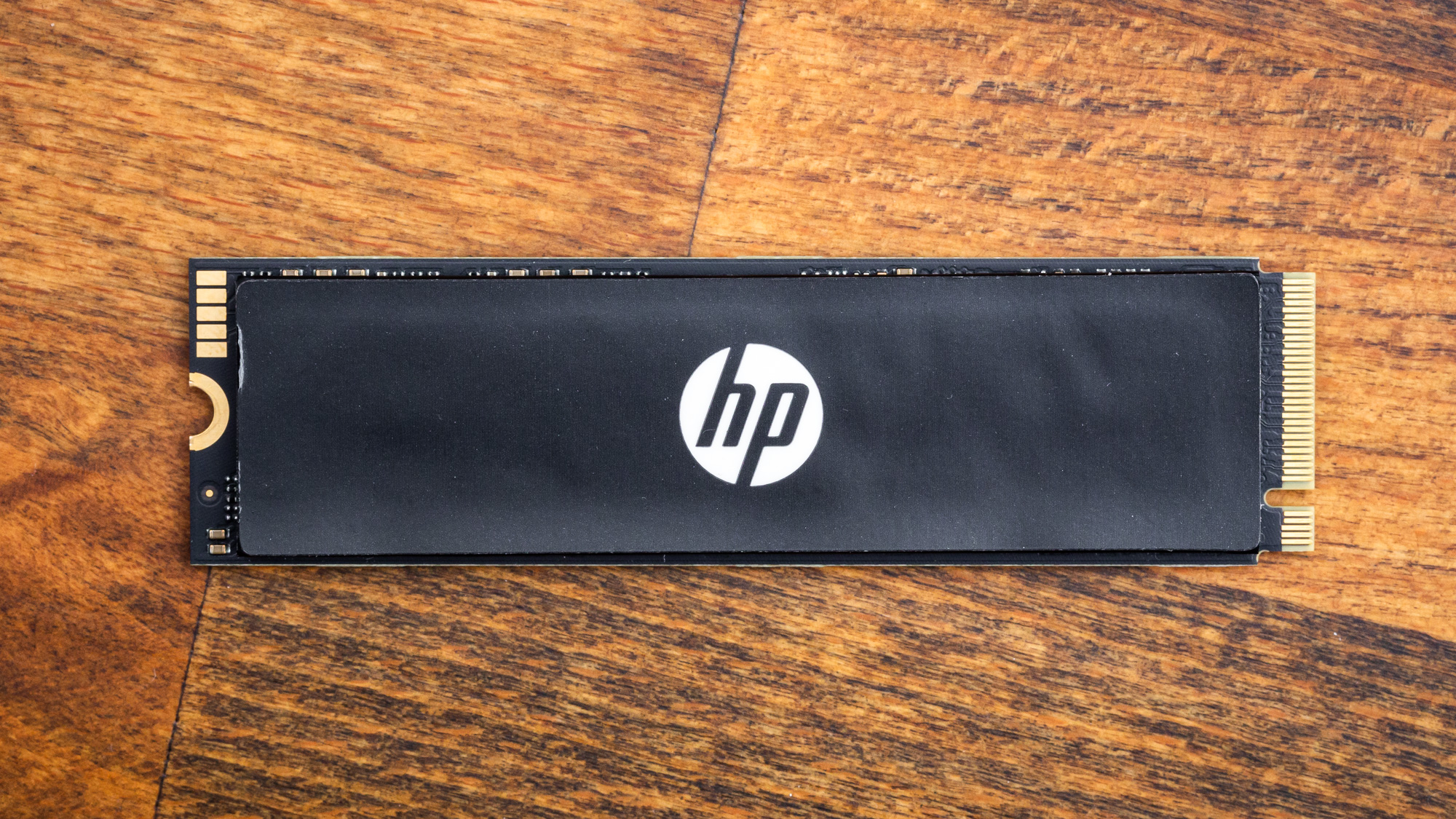
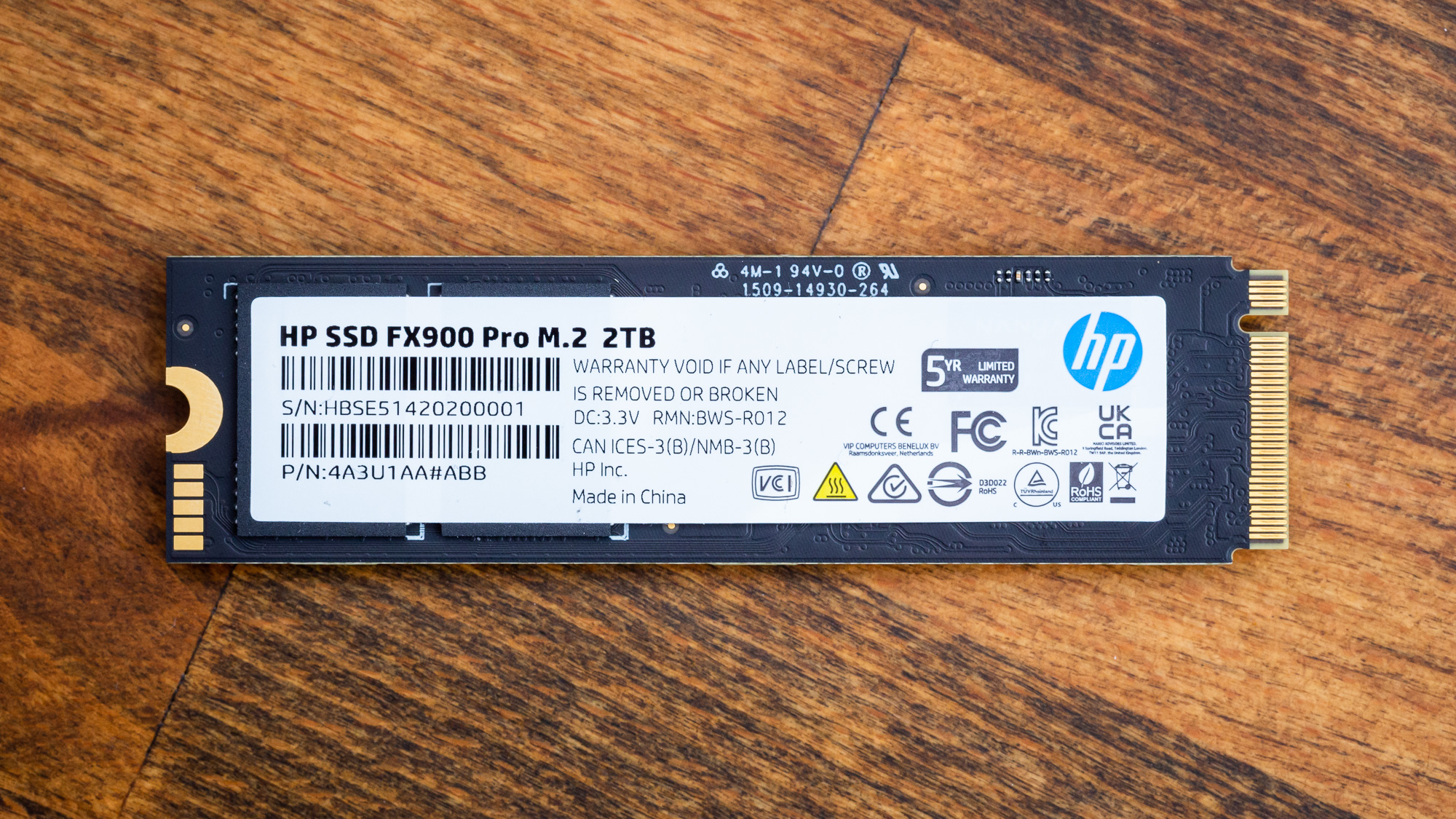
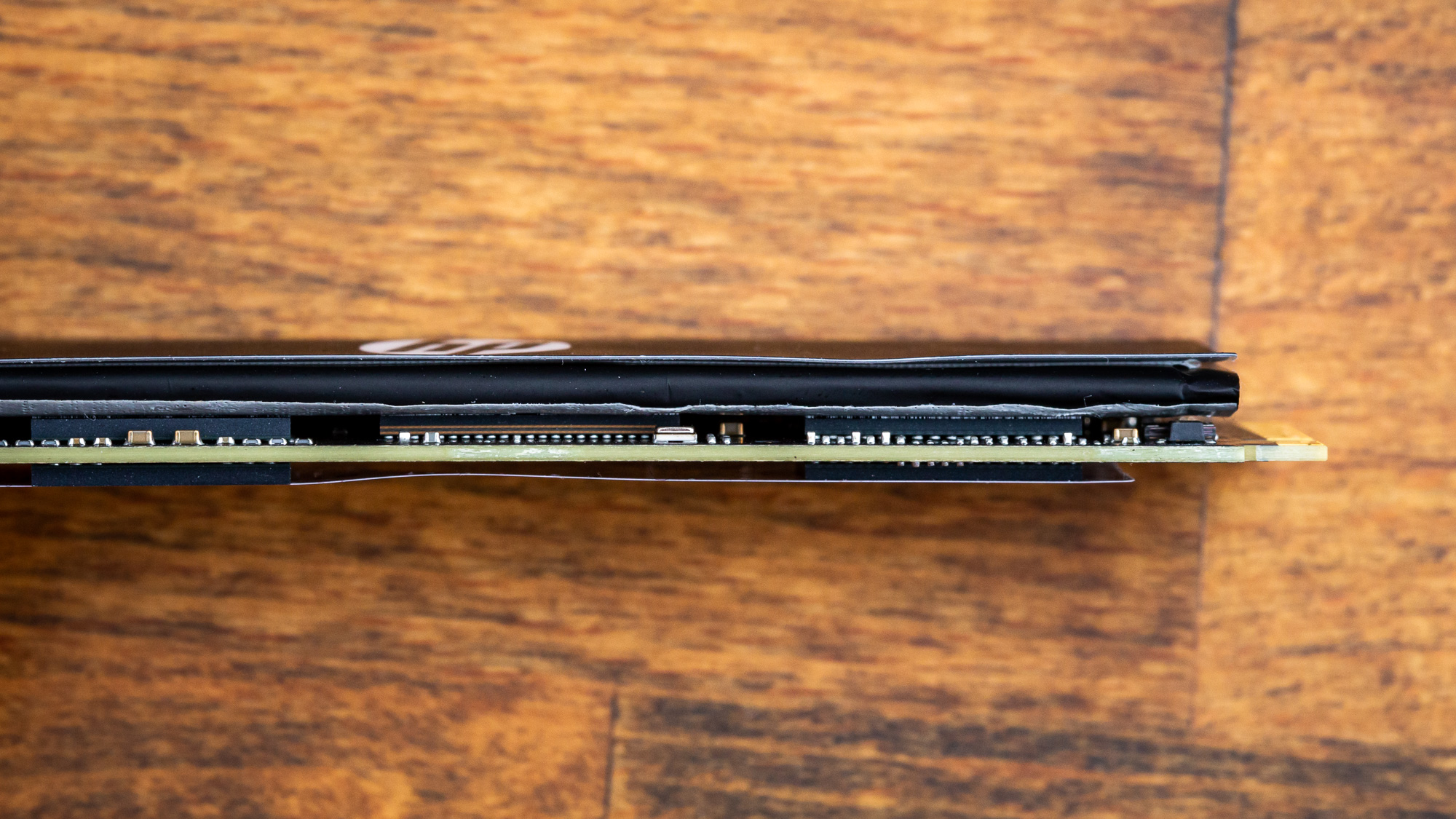
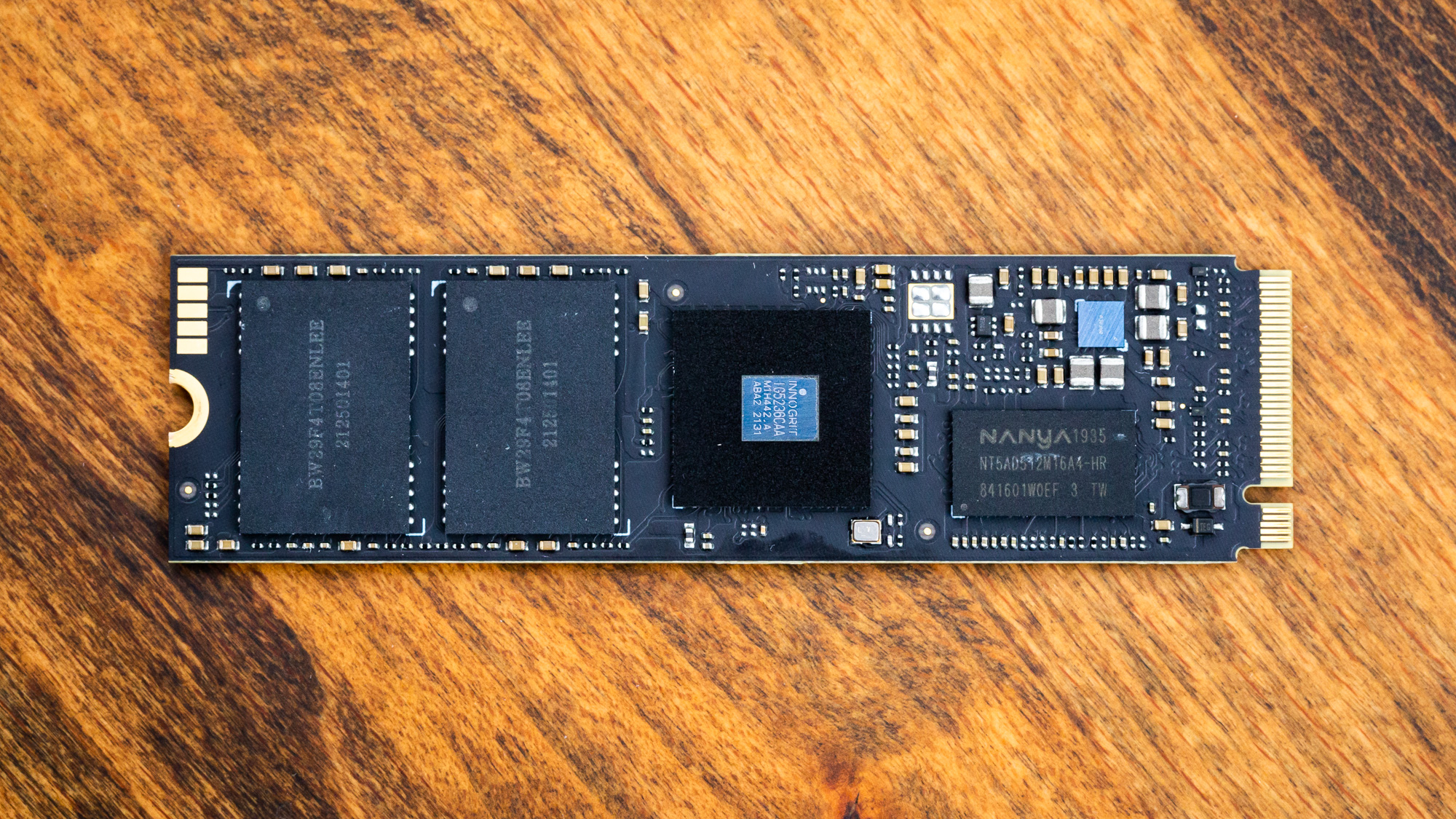
The front of the drive has a graphene heat spreader under the label. It’s thicker than you would otherwise expect. Later, we’ll see if that helps. The controller resides in the middle of the stick, surrounded by two NAND packages and a DRAM module. The back label covers two more NAND packages and more DRAM and contains basic information about the drive.
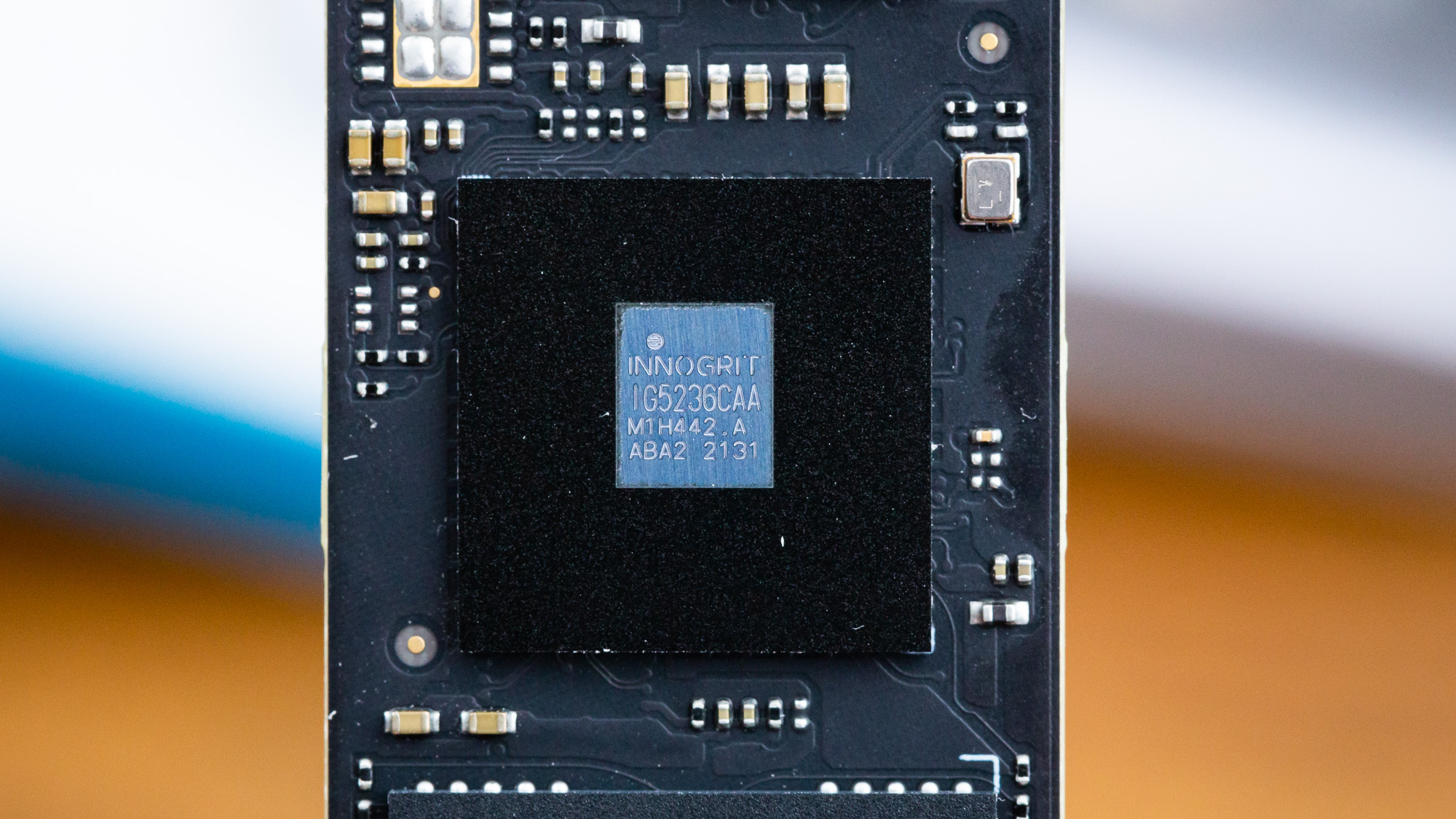
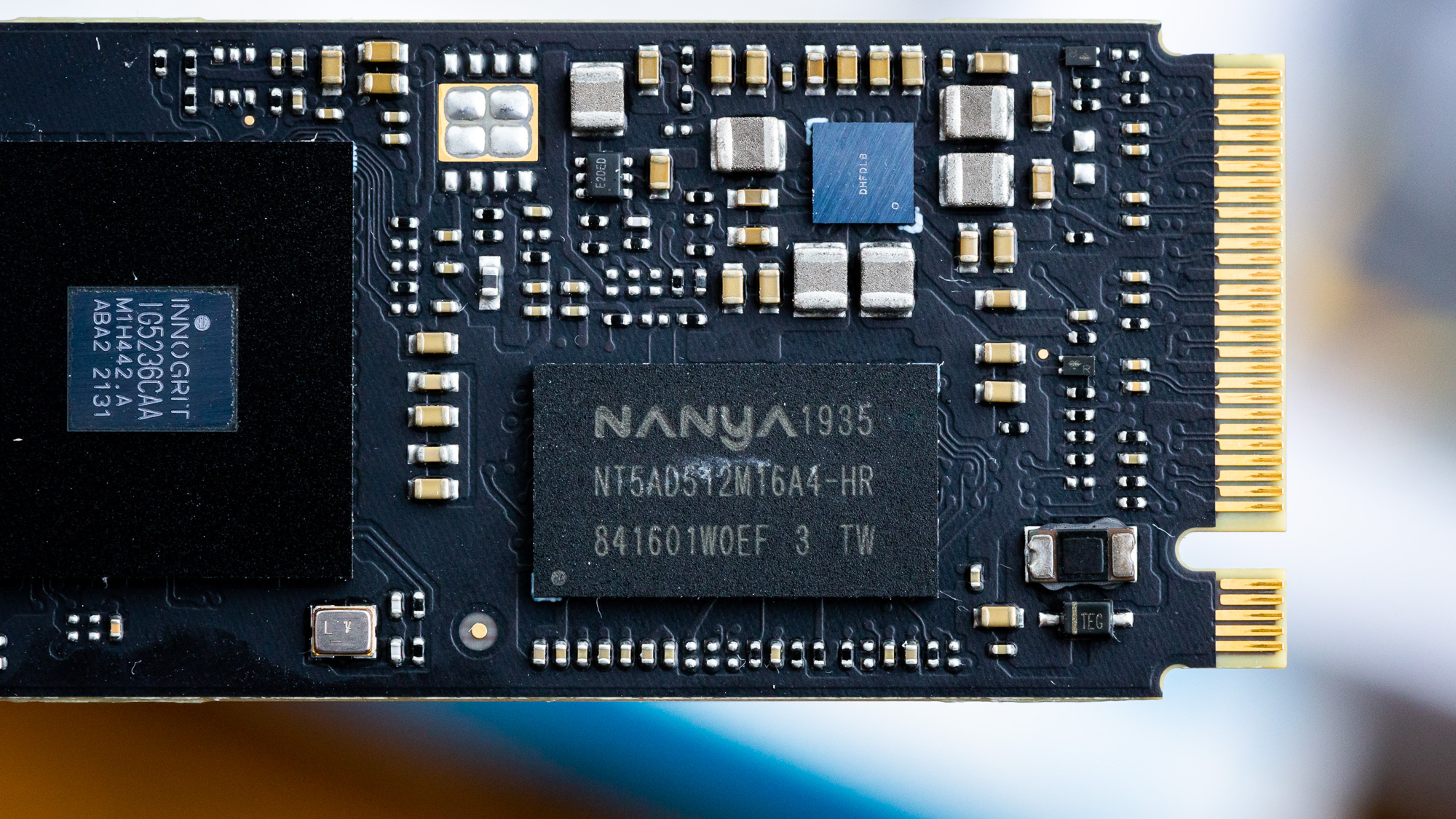
InnoGrit has been around for a few years but is a relative newcomer to the consumer SSD controller game. While its early controllers left something to be desired, the PCIe 4.0 designs have been quite competitive. This particular controller is poised to compete with the best on the market.
The NANYA DRAM is labeled NT5AD512M16A4. This is DDR4 in a 512M x 16b configuration for a total of 1GB. As there are two modules, the total DRAM capacity measures 2GB. This is what you would traditionally expect for a 2TB SSD, but many newer models skimp here to save a bit of money. While this amount of DRAM is more than enough for caching metadata for even prosumer workloads, it’s always nice to see.
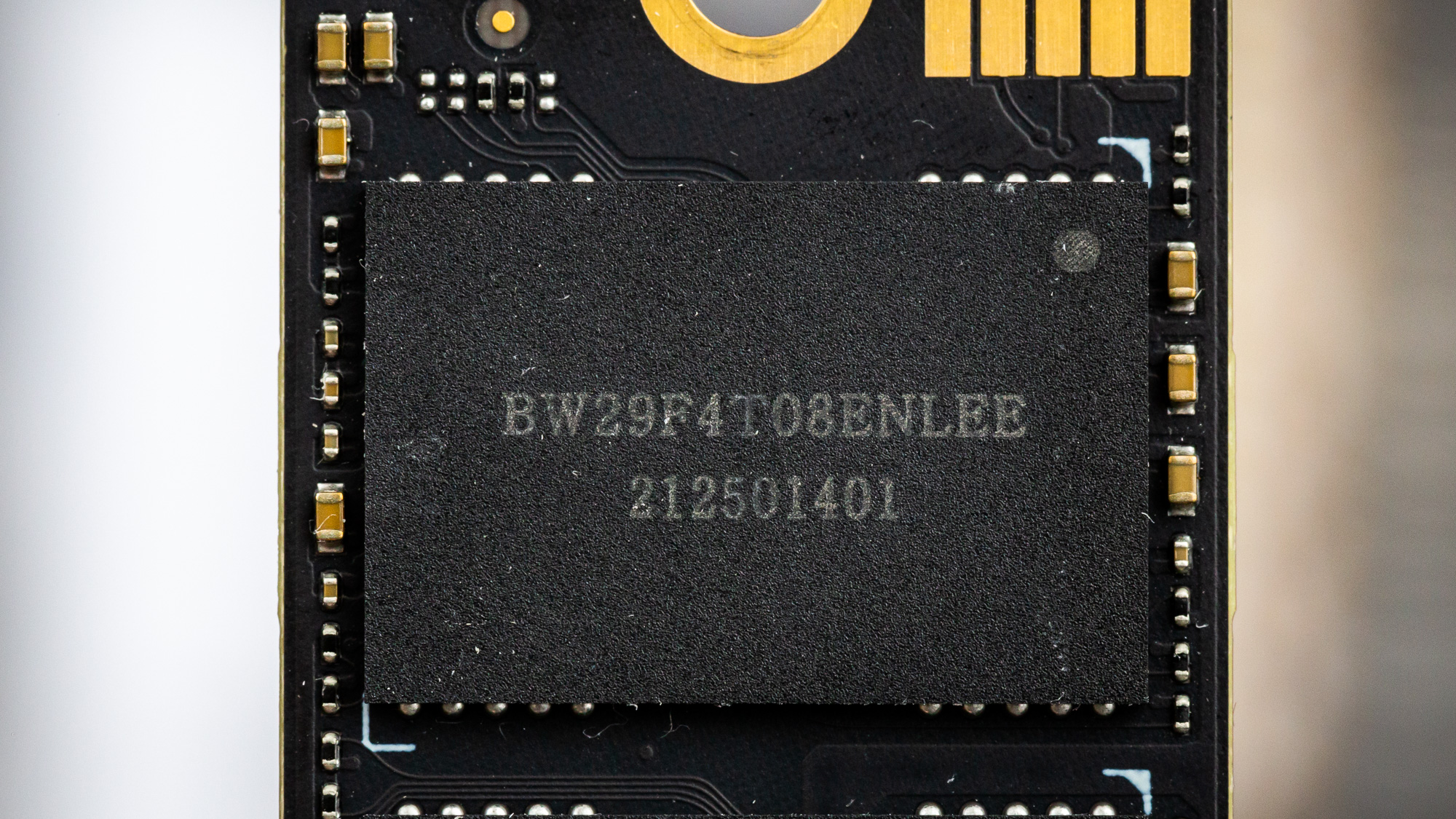
The flash is labeled BW29F4T08ENLEE. This tells us that it’s binned by BiWin but is based on Micron (MT29) flash, in this case, 176-layer B47R. It’s often possible to determine the generation with the final letters in the code. In the middle the 4T tells us it’s 4Tb or 512GB, and with four packages total that gives us 2TB of “08” or 8-bit flash. We may be able to discern the production date with the bottom number, “2125” being week 25 of 2021, but this is of secondary importance.
As mentioned above in the specifications section, the 2TB version of this drive has the highest performance on paper. Micron’s 176-layer TLC uses 512Gb, or 64GB dies, which means you have 32 dies here — that’s four dies for each of the controller’s eight channels. That is indeed the ideal amount for peak interleaving. If we read from the controller, we see a speed of 1200 MT/s from this flash, which is more than adequate with an eight-channel drive with 1600 MT/s channels. This is below some 1600 MT/s B47R we have seen, though.
MORE: Best SSDs
MORE: How We Test HDDs And SSDs
MORE: All SSD Content

Shane Downing is a Freelance Reviewer for Tom’s Hardware US, covering consumer storage hardware.